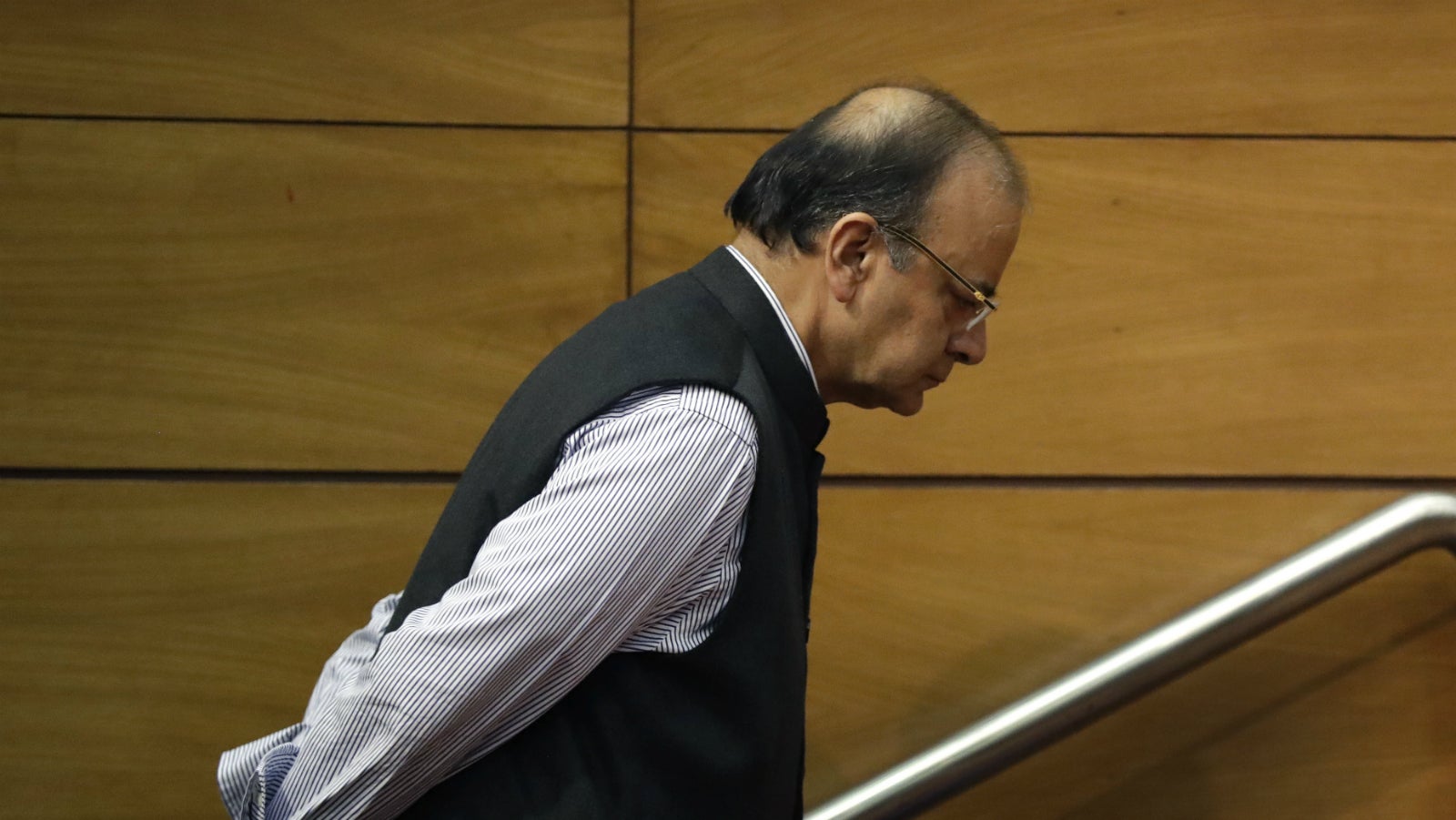In less than a month, India will present its annual budget based on unreliable GDP numbers
Earlier this year, when the Narendra Modi government sought to advance the dates for presenting the annual union budget, the rationale was straightforward: The exercise should be over before the beginning of the new financial year.


Earlier this year, when the Narendra Modi government sought to advance the dates for presenting the annual union budget, the rationale was straightforward: The exercise should be over before the beginning of the new financial year.
But when Arun Jaitley rises in parliament on Feb. 01 (in all likelihood) to table the government’s annual financial statement, India’s finance minister may actually be hamstrung by this move to advance the date—thanks to demonetisation.
The problem is simple: The impact of demonetisation on Asia’s third-largest economy is still unclear.
On Jan. 06, for instance, India’s Central Statistics Office (CSO) released its GDP growth forecast (a month before it usually does so), estimating that the economy will grow by 7.1% this financial year. However, it was clarified that the forecast has not factored in demonetisation. “There is not enough evidence to say anything about demonetisation, one way or the other,” chief statistician TCA Anant told the Business Standard newspaper. “How demonetisation will filter into the whole year’s context is a very complicated story.”
Yet, the GDP forecast is part of the larger data set that Jaitley and his team will rely on while mapping out the budget. And other observers don’t exactly agree with the CSO estimates.
CRISIL Research argued that the “advance estimates by CSO are likely to have an upward bias,” instead pegging GDP growth during the financial year at 6.8%. Similarly, the State Bank of India also forecast significantly lower GDP growth than the CSO’s expectation: “Our assessment of a 6.7% GDP growth with a downward bias is based on the premise that the liquidity shock has led to a drastic consumer spending shock.”
Here are some other forecasts that appeared late last year:
Other recent economic indicators haven’t been particularly cheerful either. For the first time in 2016, India’s manufacturing purchasing managers index—a measure of new orders, inventory levels, production, deliveries, and employment in the manufacturing sector—fell in December. The services purchasing managers index, which tracks over 400 private companies in the services sector, also slid that month, registering its sharpest drop since September 2013.
And although more data on the post-demonetisation economy will start trickling in, the government doesn’t have a lot of time on its hands. ”If the budget has to be tabled by Feb. 1, the papers will have to go for printing by Jan. 20. This would indicate that they won’t get any more data,” Pronab Sen, India’s former chief statistician, told Bloomberg.
To be sure, Jaitley’s upcoming budget won’t just help set India’s economic trajectory after prime minister Modi’s shock decision last November to pull Rs500 and Rs1,000 notes out of circulation, it will also have political ramifications. After all, a number of assembly elections, including in key states Uttar Pradesh and Punjab, are scheduled for after the budget.
In many ways, Modi’s track record as prime minister will also depend on whether the Indian economy will be able to recover from the aftermath of demonetisation. This year’s budget will be critical to that process—with or without sufficient data.